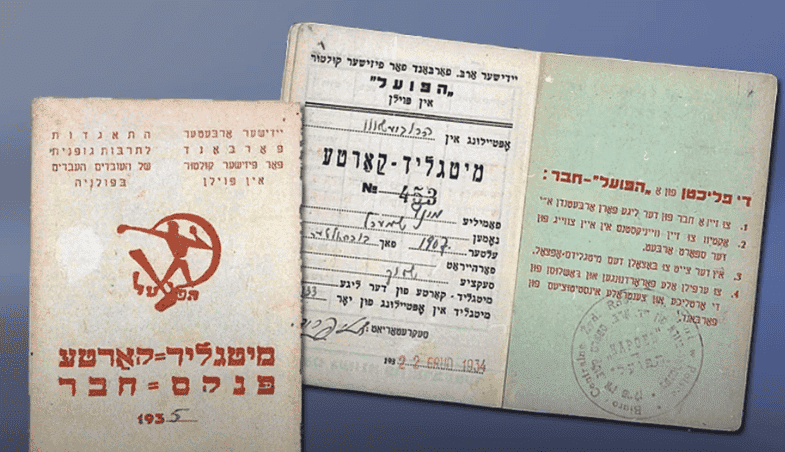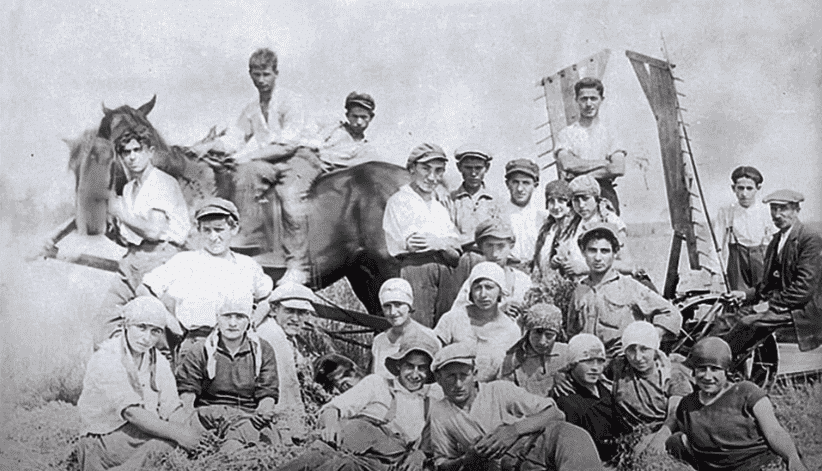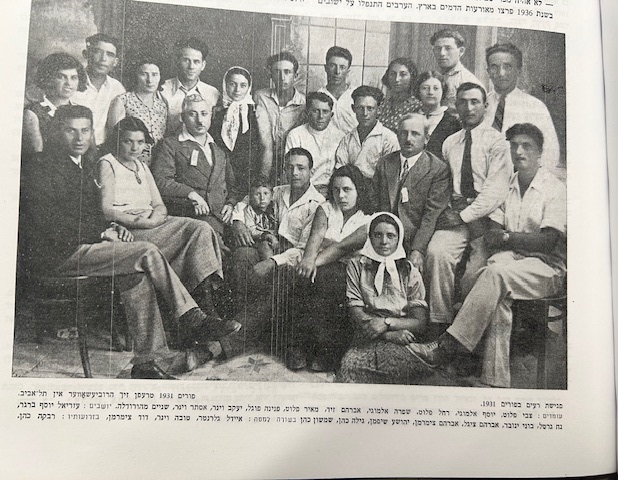Home » Politics and youth movements
Hrubieszow was a markedly Hasidic city during the inter-war period, and identification as religious and traditional was the norm. However, the Zionist movement steadily gained ground. In the first few years that followed World War I, representatives of all of the ideological currents sat on the community committee – include Orthodox, Zionists, and Bund ideologues. In 1931, 12 members were elected to the community committee, of which four were from the artisans’ faction, three were Zionists, three were from Agudat Israel, and two were non-partisan. Shmuel Brand was elected president of the community, a role he filled for many years.
The first Zionists in Hrubieszow became organized as the Zion Association as early as 1917, and within a few years, Zionist activity in the city encompassed all currents and movements: Tze’irei Zion, Poalei Zion, Mizrachi, General Zionists, Hapoel HaMizrachi and the revisionists. Zionist youth movements, like Hashomer Hatzair, Freiheit, HeHalutz Hatzair and Beitar, set up chapters as well. Members of the “HeHalutz” established a Hachsharah (agricultural training) group, and its apprentices worked in a sawmill owned by a certain Shidlovski, a Hrubieszow native and admirer of Zionism. In 1934, Hashomer HaTsair established its own Hachsharah group, whose members worked in a flour mill, in granaries and in sawmills owned by Jews. In August 1932, a conference for Lublin district Beitar members was held in Hrubieszow. That same year, the Beitar group received weapons and instructors, who were former officers in the Polish army, and began conducting military training for its members.
During this period, many of Hrubieszow’s young adults immigrated to what was then Mandatory Palestine. One of them was Yosef Almogi, who would later become the chair of the World Zionist Organization, an Israeli government minister and the mayor of Haifa. The results of the elections to the Zionist congresses serve as a yardstick for assessing the scale of Zionist activity in the city and the balance of power between its various factions. On the eve of the 15th Congress (1927), 229 Hrubieszow “shekels” were sold, and by the time of the 21st Congress (1939), the number of “shekel” buyers rose to 883.
In 1927, eleven Jews were elected to the city council (out of twenty-four aldermen). Three were from Poalei Zion, three were from the Bund, three were from independent lists, and two were communists. Two of the Polish representatives, members of the Farmers’ Party, worked with the Jewish aldermen to help them in their struggle against the anti-Semitic aldermen. Active non-Zionist groups in Hrubieszow included chapters of Agudat Israel and Agudat Israel Youth, whose base was mostly Hasidic, and the Bund, with its youth movement, Zukunft. The Bund had a major influence on the trade unions. Some of the younger members of the community belonged to the communist party, which had been operating clandestinely in Poland at the time. In 1923, several of its operatives were imprisoned, and three of them (Moshe Kornblit, Barish Weisbrot and Yehoshua Eisenberg) were sentenced to long prison terms.




